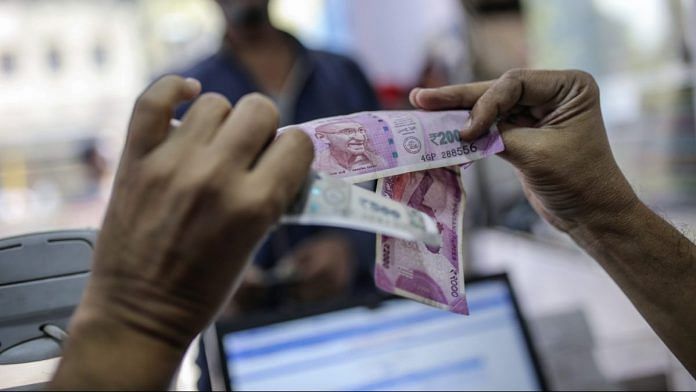Mumbai: India’s sharp slowdown is endangering the fiscal deficit targets of its states, threatening to unravel progress made over the past few years and driving borrowing costs higher for some of them.
The states have budgeted a consolidated fiscal deficit target of 2.6% of gross domestic product in the financial year ending March, a recent study by the Reserve Bank of India shows. While the deficit ratio has remained within the mandated threshold of 3% of GDP in the previous two years, doubts are growing about their ability to meet the latest goal.
Any slippage could see India’s overall public finances come under pressure and raise the risk of a downgrade by rating companies. Only last month, Moody’s Investors Service cut the nation’s credit rating outlook to negative, citing a litany of problems from a worsening shadow banking crunch and a prolonged slowdown in the economy to rising public debt.
Outstanding debt of states has risen over the last five years to 25% of GDP, posing medium-term challenges to its sustainability, according to the RBI study. India’s gross general government debt — including federal and states’ borrowings — stood at 69% of GDP, higher than China’s 55.6%, according to the International Monetary Fund.
That spells bad news for states’ borrowing costs. The yield on 10-year bonds sold by West Bengal, which has one of the lowest deficit ratios among India’s 28 states, rose to 7.29% in December from 7.06% in July, data compiled by Bloomberg News show. That’s still lower than the 8.21% at the beginning of the year, as yields tracked the RBI’s aggressive interest rate cuts.
Despite attractive yields on states’ debt that carry an implicit sovereign guarantee, there’s little interest from global funds — which have used only 2.2% of the 612-billion rupee ($8.6 billion) investment limit available to them in such notes. Part of the reason, according to fund managers, is a lack of price differentiation between the better-run and poorer states.
West Bengal is joined by states such as Gujarat and Maharashtra that have managed to keep their fiscal deficits at less than 3% of GDP. But they all pay a coupon similar to that of, or greater than some of their financially weaker peers. Take Rajasthan: the western Indian state had an average gross fiscal deficit of 5.4% between financial years 2016 and 2019, but sold 10-year bonds this month at a yield of 7.18%.
States haven’t had a problem attracting local investors with yields that are typically higher than those on notes issued by the federal government.
Increasing debt obligations are limiting the scope for greater capital spending by some of the states.
“With the center’s finances already under acute stress, we may see cut backs in pace of spending of both the center and states,” said Garima Kapoor, an economist at Elara Securities India Pvt. in Mumbai. “This could have ramifications for growth and domestic liquidity conditions.”
A Moody’s analysis of state budgets shows that capital expenditure by states will likely grow only slightly to 5.5 trillion rupees in the current fiscal year from 5.4 trillion rupees the previous year.
Social sector spending, which recovered in the year ended March 2019, is expected to hold up in the current year, broadly in line with Prime Minister Narendra Modi’s vision of greater welfare reaching the poorer sections of society.
“A shift is projected from expenditure on education, health and family welfare to sectors like housing and urban development and expenditure on social security and welfare,” Care Ratings Ltd. wrote in a report, adding that recent initiatives like a health program for all may impact social sector expenditures.
The growth slowdown also means weaker revenue for states, especially collections from the goods and services tax.
It will “constrain states’ ability to service their rising debt burdens and address spending needs, especially for states with debt burdens above 200% and debt service over 30% of operating revenue, such as Haryana, Punjab, Kerala and West Bengal,” Moody’s said in a report.- Bloomberg
Also read: Modi govt set to miss fiscal deficit target for 2019-20






